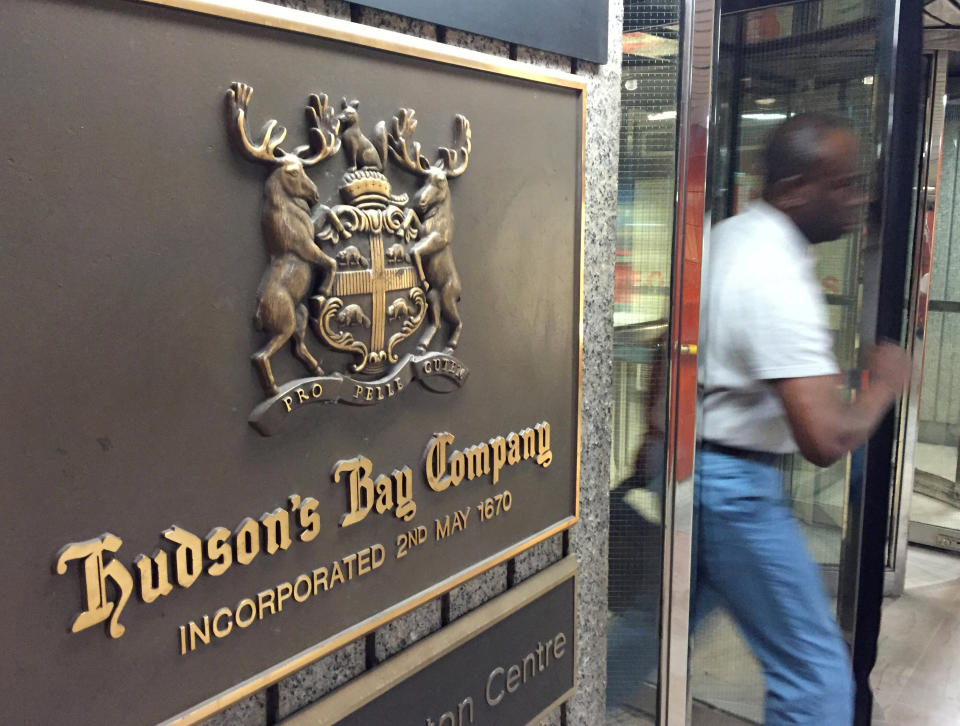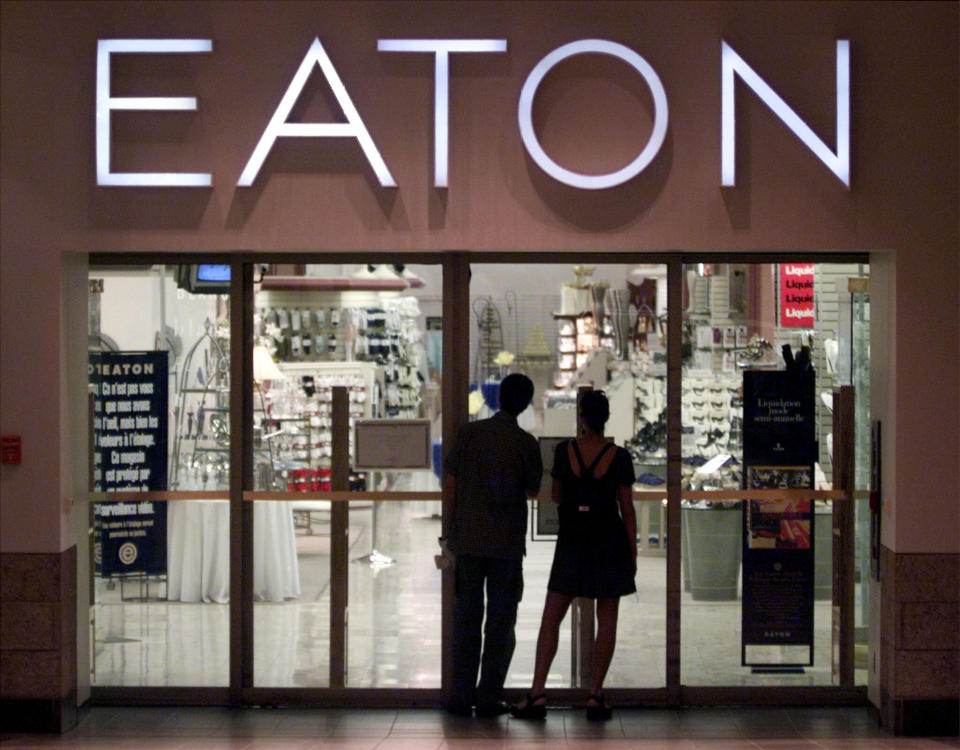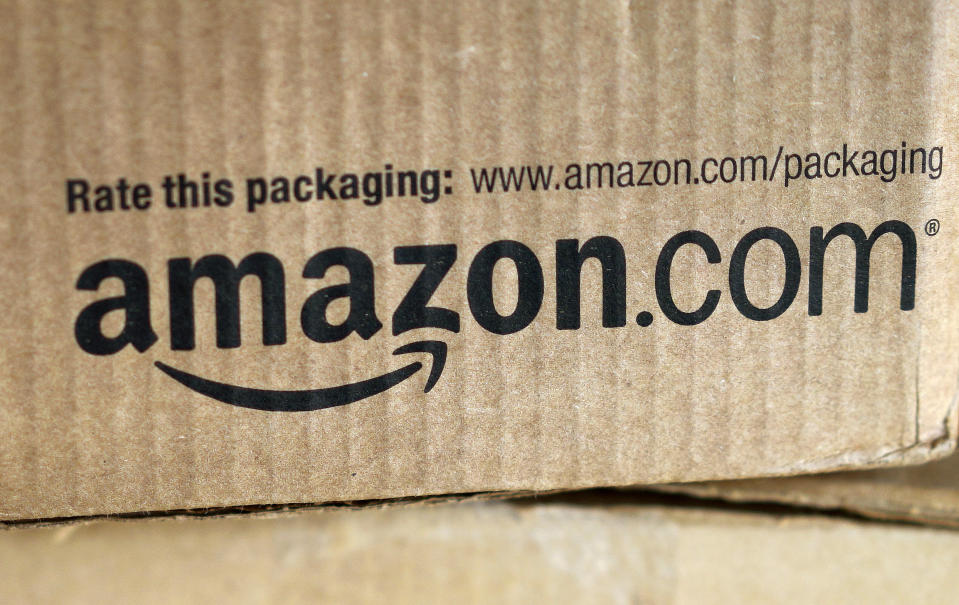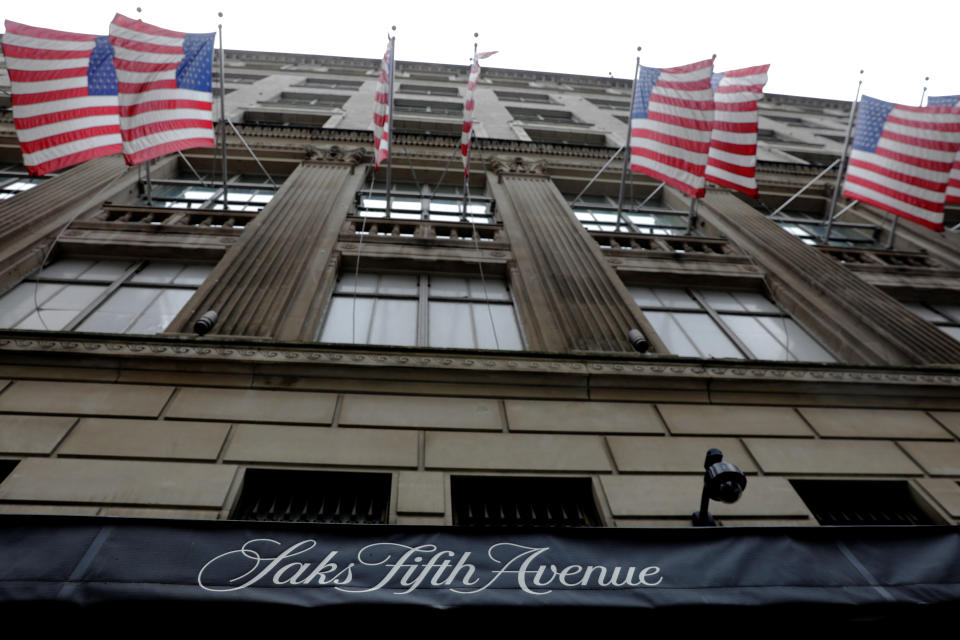'A dying beast': Will department stores exist 10 years from now?
The death of the retail industry may have been greatly exaggerated – but that doesn't mean the industry isn't currently going through major disruptive and fundamental changes. For this special series, Yahoo Finance Canada will look at how the retail scene is developing, what companies are doing to adapt, and what could come next. Click the image above to see our full coverage of what the future holds for the Canadian and global retail scene.
Helena Foulkes has been the chief executive officer of the Hudson’s Bay Co. (HBC.TO) for more than a year now and she is still often asked this question: why did she leave her executive position with U.S. pharmacy behemoth CVS Health Corp. to go run a department store chain?
“I had many people who were wondering what the heck I was doing,” Foulkes said during a fireside chat with Scotiabank director Patricia Baker at the Retail Council of Canada’s annual Store conference last week.

“But I was really excited by this challenge because to me, it was sort of a dare – people thought that no one could make this industry work. And I am really excited about the turn around.”
The challenge facing Foulkes is a daunting one – revitalize multiple chains of department stores, a segment of the retail industry that has been struggling for the better part of the last decade, arguably more.
So far, Foulkes has made several bold moves. There was a merger with German retailer SIGNA that left HBC with a 49.9 per cent stake of its European business and real estate. In December, HBC announced the closure of Home Outfitters stores in Canada. Most recently, the company announced it is reviewing strategic options for its Lord and Taylor business, including a potential sale of the division.
But whether those strategic moves – and the subsequent ones that are likely to come – will provide longterm stability for the company remains to be seen.
Of course, HBC is not the only retailer grappling with struggling sales. Department stores across North America are facing declining sales at a time when the entire retail industry is being disrupted by e-commerce and behemoths like Amazon Inc., as well as changing demographics.
Eric Matusiak, a partner and national retail leader at BDO, says the changes that have hit the industry over the last several years have left department stores “in need of a massive reinvention or, more likely, an extinction.”
“I think the department store is a dying beast. It’s had its 150-year run in the market,” Matusiak said in an interview with Yahoo Finance Canada, pointing to the fact that Amazon is currently the biggest online seller of apparel.
“There may still be large retail spaces, but I think they are going to be used much more differently in the future. Department stores right now are really struggling with how do you remain relevant.”

Department stores, which date back to the 1800s, became key as cities began to develop, providing customers with a wide range of goods. As people began migrating to the suburbs, so did department stores, expanding rapidly to the outskirts of cities.
Bruce Winder, a partner at the Retail Advisors Network, says the decline of department stores first began with the emergence of discount retailers such as Wal-Mart.
“The discounter was selling some of the same stuff the department store offered, but by using distribution centres, a different supply chain, buying in bulk, and other things, they were able to sell the same product for cheaper,” Winder said.
“So people started buying from the discounters instead... There was still an affinity with the department stores at this time, but they started to lose market share slowly to discounters.”
Then came the so-called category killers – stores catering to specific product categories, such as Toys R Us, Best Buy and Canadian Tire. On top of that was changing demographics, says Winder, with a younger generation shopping in a drastically different way from previous generations.
“Over time, from a demographic standpoint and as a result of other competitors – either discount stores or category killers – the department store started to fall,” Winder said.
“What you have now is an extreme acceleration of that.”

Many department stores have certainly struggled to adapt to the rise of online retailers. While all have an online presence, many companies arrived late to the game.
“It’s very difficult to reinvent yourself when things are going OK,” Winder said. “Usually by the time you realize that it’s not OK, it’s too late.”
Sears was previously considered one of Canada’s most successful department store chains before it collapsed in 2017. While on the brink of insolvency and bleeding cash, the company made a last-ditch effort to reinvent itself by launching a new fast fashion line targeting 20-30 year olds and overhauling its e-commerce business. The company even changed its logo as part of the revamp.
“2017 is the year for change and reinvention at Sears Canada,” the company’s executive chairman Brandon Stranzl said at the time. Three months after making that statement, Sears Canada filed for creditor protection.
“This industry has changed so quickly, and with such strong magnitude, that it is very difficult to make the changes they needed to make, especially when you have such legacy infrastructure on your balance sheet,” Winder said.
“It’s like a giant ship. It takes a couple of miles to turn and change course. It’s the same thing with these big department stores.”
Even the exit of competitors like Sears hasn’t helped other department stores when it comes to sales.
“If you look at the most recent history, when Target left Canada, you’d figure that other department stores should benefit from that. When Sears folded up, you’d think others would benefit from that,” said Ed Strapagiel, an independent retail consultant.
“None of that ever occurred.”

However, a bright spot when it comes to the department store segment appears to be the high-end, luxury retailers, such as Nieman Marcus, Nordstrom and HBC’s Saks Fifth Avenue.
“They carry the one thing that discounters don’t have, they have the one thing that Amazon can’t have, and they have the thing that big box stores often lack and that’s extremely high-end customer service,” Winder said.
“I think the best action in the department store segment is affluent customers because they will pay for the service and premium brands, which will help offset real estate costs.”
Saks Fifth Avenue has been a bright spot for HBC. The retailer saw revenues slip 1.6 per cent in the fourth quarter of 2018 as overall sales fell across the board – with the exception of Saks.
Still, Matusiak is not overly optimistic overall.
“I think most traditional department stores are going to be extinct in 10 years,” Matusiak says. “I think even Nordstrom and Saks will have to watch themselves. They may hold on with what they have but let’s face it, there’s only so many luxury shoppers out there.
“I think the luxury end will survive, but most everything else is going to go online.”
As the department store segment undergoes this drastic change, another question is what happens to the real estate that companies currently occupy.
HBC sold its flagship Lord and Taylor store in New York City for US$850 million to WeWork. Matusiak expects more retailers will make similar decisions going forward.
“I think you’re going to see more and more of retailers unlocking their real estate,” “But I still think it’s probably too much space. The owners of these malls are going to have to get creative about what they use the space for.”
The existing stores can be used as fulfillment centres, where goods are sent before being shipped to customers. Matusiak also says there is potential for innovative solutions when it comes to the existing department store footprints – things like daycare centres, or indoor gardens, or housing.
Winder says selling off the rural department stores will be more difficult.
“You can try to repurpose them or sell them off to a retailer that is expanding,” Winder said.
“The people who are opening stores now are the digital natives, and they’re only adding select stores at the very best malls in the very best spots.”
As for HBC, Foulkes has insisted repeatedly since taking over last year that “everything is on the table.”
In an interview with Recode’s Kara Swisher in March, Foulkes was asked who she feared in the competitive and constantly changing retail space. Her answer hints at the challenge HBC has when it comes to ensuring its department stores – Hudson’s Bay and Saks Fifth Avenue in particular – succeed.
“The biggest thing I fear right now actually is our own ability to move fast enough,” she told Swisher.
“It’s just the complexity. It wakes me up at night to think about, ‘Are we moving fast enough?’ Because the world is moving so fast.”
Download the Yahoo Finance app, available for Apple and Android.

 Yahoo Finance
Yahoo Finance 


